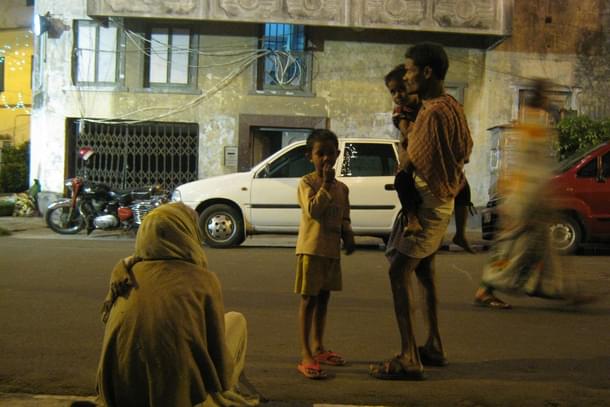Business
The Bengal Global Business Summit Jamboree And Failure Of The State's Industrial Economy
Gourav Lama
Apr 22, 2022, 08:35 PM | Updated 08:35 PM IST
Save & read from anywhere!
Bookmark stories for easy access on any device or the Swarajya app.


The Bengal business summit which concluded yesterday is a major affair of the Government of West Bengal since 2015. According to its website “The Bengal Global Business Summit is an ideal platform for forging alliances, tie up partnerships, and acquiring a clear vision of the opportunities that the state provides for expanding business, making new investments, setting up green field manufacturing projects and associated activities.”
The business Summit therefore aims to bring in more investment to the state. However, turning our gaze from the annual event towards the reality we see a grim picture of industrial investment and development in West Bengal.
The numbers
FDI
To start with the figures from last year, a total of Rs 3,47,978 crores of FDI was invested in India and 812 proposals were implemented from the total investments. However only a meagre Rs 1,967 crores were invested in West Bengal, which is only about 0.56 per cent share of the total FDI investment.
This low figure suggests the inability of the state to attract investment on a large scale.
If we look at the figures from the last 10 years, only 0.72 per cent of the total investment proposals were made for the state of West Bengal out of the total national share. The figures show a different picture from what the Bengal government projects in its annual Bengal Global Business Submit.
Numbers from last five Business Summits in Bengal
If we look at the figure from the last five Bengal Global Business Summits from 2015-2019, a total of Rs 12,32,856 crores worth of proposals were made but according to the report sent from the state government to the Central government, only a total of Rs 37,504 crore of have been invested in Bengal, which makes up only a meagre 3 per cent of the total investment proposed.
Industrial decline across the board
During the chief Ministership of late Bidhan Chandra Roy, the then Prime Minister of India Jawaharlal Nehru was of the opinion that the Barrackpore Industrial region would show the path of development to India. Events in the last few decades however have shown that things were not in line with the late Prime Minister’s prediction. In the last 10 years alone, under the reign of the Trinamool Congress, a total of 174 factories closed down in the same belt. If we take the data from the Department of Environment of the West Bengal Government, in the last five years from 2016-2021, a total of 21,521 factories were shut out of which more than 271 were of big industries whose monthly output was worth more than Rs 1,000 crores.
If we take the example of another prominent Industrial belt i.e. Haldia Industrial Belt, in the last two years firms like Ennore Coke Limited, Rohit Ferro-Tech Limited, Modern Castings Private Limited, JVL Agro Industries Ltd., Kanoria Foundation and many others factories were closed down due to which approximately 2,30,000 employees lost their jobs.
If we look at a western district like Purulia, during the left regime, around 3,451 acres of land was allotted for industrial development. Here, Raghunathpur Steel and Allied Industrial Park 1 and 2 were established. Other investors like Jai Balaji Industries Ltd., Reliance Cement, Emami, Shyam Steel Industries Ltd., were also interested to invest in this park. However, ultimately most such investors sold off their lands to the West Bengal Industrial Infrastructure Development Corporation (WBIIDC) and withdrew their investment.
Interestingly the Chatterjee Group of Dr Purnendu Chatterjee, even after making a proposal of around Rs 28,700 crores, did not get the land for investing even after waiting for three years.
Now the question arises, why do investors not feel welcome in West Bengal?
Firstly, the law and order situation in Bengal is in a bad shape. The Syndicate Raj has ruined every prospect for the industries to have a free hand in appropriating the raw materials required.
Last week, in and around Kolkata suburbs, there were four shoot outs as a result of internal clashes between groups of the Trinamool Congress. The situation is such that even a senior leader of Trinamool Congress, and Member of Parliament, Saugata Roy remarked that such a condition of law and order was not seen even during the Naxal period.
As a result of all this, the business community of Khardah and adjoining areas have gone on strike against the malice of the Syndicate Raj.
Second, the issue of connectivity. For industrial development, road connectivity is of great importance; however, in the last 10 years, the TMC government has not been able to lay even a 100 km of roadways.
Thirdly, the extortion or ‘tolabaji’ has forced the Kanojia Group to shut shop in Bengal even before they started their production. In a similar incident, an Exide factory was closed for one week due to extortion. The loss incurred was pegged at around Rs 6 crores. In another instance in Nupur, South 24 Parganas, an IFB Agro Industries plant closed down due to extortion in 2020.
According to the North Bengal Industries Association, no heavy industry was established in North Bengal in the year 2021 due to extortion and Syndicate. Though North Bengal has huge potential for industrial growth, it is to be noted that no effort towards the same was made by the state Government.
Bengal was once known for its jute industries, however, between May 2021 and April 2022 around 25 jute mills shut down. As a result of which, many employees lost their jobs.
Even Trinamool Congress’s Member of Parliament, Mahua Moitra, remarked that around 7 lakhs youth from the district of Nadia of her own constituency have migrated outside for better opportunities.
The remark itself made by the TMC’s MP suggests that there are practically no better prospects for the youths and the state government has failed to tap in the brains and the skills of a large talent pool from its own state.
The Bengal Global Business Summit has failed to do what the state government claimed: to bring in investments to Bengal. If we look at the State Budget of WB 2022-23 Financial Year, the state Government proposed only 2.1 per cent share of the total budget for the Infrastructural Development. This is much lower than the other states, where the average budget allocation proposed for the infrastructural development is around 12-15 per cent of the total share.
The Budget therefore, proves the fact that the West Bengal Government lacks vision for the holistic and overall development of the state’s infrastructure. This in turn has affected the investment potential of the state, as a result of which not a single big industry has invested in the state for the last 11 years.
While the Bengal Global Business Summit was going on, one veteran Bengali Investor, Subir Chakraborty, who is also the Managing Director and CEO of Exide Industries, did not show any interest in West Bengal and signed a Memorandum of Understanding with the Government of Karnataka instead to invest Rs. 6000 Crores in Karnataka this month.
Mamata Banerjee claims to have traveled abroad to bring in industrial investment; however during her tenure not a single Special Economic Zone was created. Compared to other major states like Karnataka which has 62 SEZ, Maharashtra (48), Tamil Nadu (54) SEZ, Telangana (68), and Uttar Pradesh (23), West Bengal has only 7 SEZ and all of them were brought in during the Left regime.
Recently the Prime Minister of Japan visited India and signed an MoU with the Government of India promising Rs 3,20,000 crores worth of investment in states like Gujarat, Karnataka and Madhya Pradesh and also in the non-BJP governed states like Tamil Nadu, Telangana and Maharashtra. West Bengal did not feature in the list as it was not able to attract the investors. The claims made by the Honourable Chief Minister are not to be seen anywhere. The land Acquisition Policy of the state is not favourable to the industries and investors and idea of ‘Land Bank’ is yet to be implemented.
Therefore, to sum up from the above discussion, what we can say is that the state’s government's claim to bring in new investment through the Bengal Global Business Summit is a concoction and is distant from reality.
The summit concluded on the note that it received proposals worth Rs 3,42,000 crore rupees. It’s only a matter of time to see how much of that money is actually invested.
Data collected from the Department of Industries and Internal Trade, and the Department of Environment, West Bengal government.
Gourav Lama is Assistant Professor of History, Presidency University, Kolkata and Vice-President BJYM, West Bengal.





